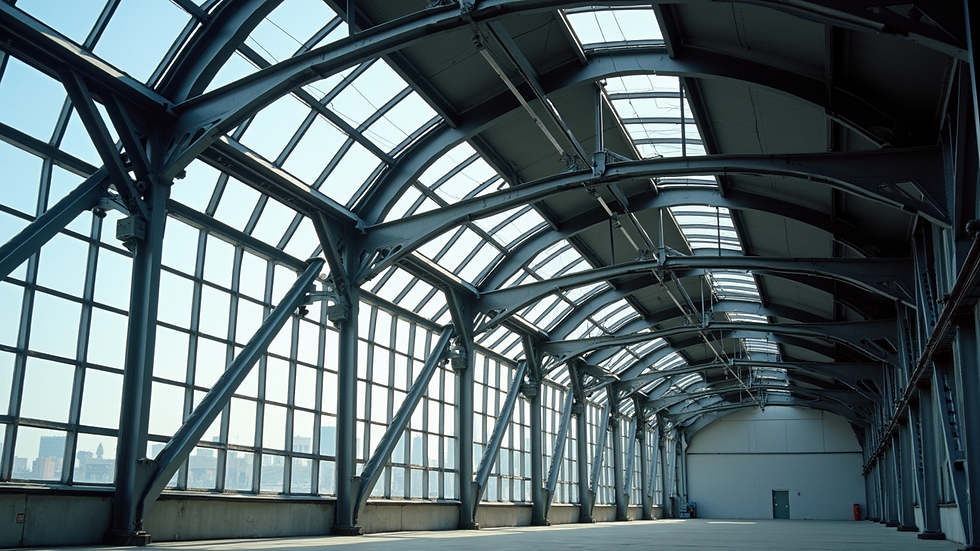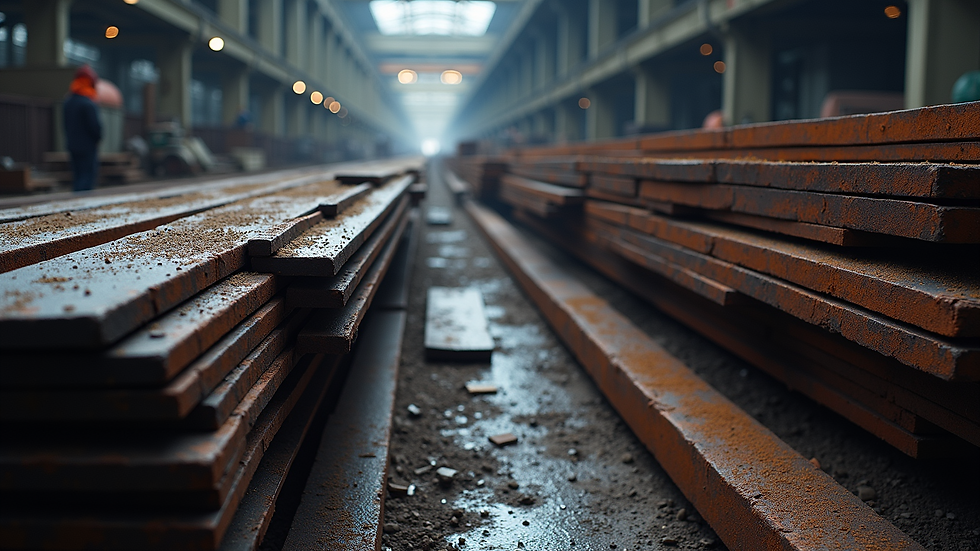The Advantages of Using Steel in Modern Building Design
- StratCan Building Systems
- Aug 11
- 4 min read
Steel has become a cornerstone material in modern building design. Its versatility, strength, and sustainability make it an ideal choice for architects, engineers, and builders. This article explores the many benefits of using steel in construction, highlighting how it enhances building performance, design flexibility, and environmental responsibility.
Why Steel Building Design is Transforming Construction
Steel buildings are revolutionizing the construction industry due to their unique properties. Unlike traditional materials such as wood or concrete, steel offers superior strength-to-weight ratio, allowing for taller and more complex structures without compromising safety.
One of the key advantages is steel’s durability. It resists pests, rot, and fire, which significantly reduces maintenance costs over the building’s lifespan. Additionally, steel components are prefabricated in factories, ensuring precision and quality control. This prefabrication also speeds up onsite assembly, reducing construction time and labor costs.
For example, many commercial skyscrapers and industrial warehouses rely on steel frameworks to achieve large open spaces without internal columns. This flexibility allows for more efficient use of interior space and easier future modifications.

Structural Strength and Design Flexibility of Steel Buildings
Steel’s high tensile strength makes it an excellent choice for buildings that must withstand extreme conditions such as earthquakes, heavy snow loads, or strong winds. Its ability to flex without breaking provides resilience that other materials cannot match.
Designers appreciate steel for its versatility. It can be molded into various shapes and sizes, enabling innovative architectural designs that are both functional and aesthetically pleasing. Curved roofs, cantilevered sections, and large glass facades are easier to achieve with steel.
Moreover, steel’s lightweight nature reduces the load on foundations, which can lower construction costs and environmental impact. This is especially beneficial in urban areas where space and soil conditions may be challenging.
Incorporating efficient construction methods with steel further enhances project timelines and budget management. These methods optimize the use of steel components, minimize waste, and improve overall site safety.

What are the 7 principles of sustainable construction?
Sustainable construction aims to minimize environmental impact while maximizing resource efficiency. When using steel in building design, these seven principles are particularly relevant:
Resource Efficiency - Steel is 100% recyclable, and many steel products contain a high percentage of recycled content.
Energy Efficiency - Steel structures can be designed to optimize insulation and reduce energy consumption.
Durability and Longevity - Steel’s resistance to corrosion and pests extends building life, reducing the need for replacements.
Waste Reduction - Prefabrication of steel components reduces onsite waste and improves material management.
Water Conservation - Steel construction processes typically use less water compared to concrete.
Indoor Environmental Quality - Steel buildings can incorporate better ventilation and natural lighting designs.
Site Impact Minimization - Steel’s lightweight nature reduces foundation size and soil disturbance.
By adhering to these principles, steel buildings contribute to greener construction practices and help meet modern environmental standards.

Cost-Effectiveness and Speed of Steel Construction
One of the most compelling reasons to choose steel is its cost-effectiveness. Although the initial material cost may be higher than wood or concrete, the overall project cost often comes down due to faster construction times and lower maintenance expenses.
Steel components are manufactured offsite with exact specifications, which reduces errors and rework. This prefabrication leads to shorter construction schedules, allowing buildings to be occupied sooner. Faster project completion also means reduced financing costs and earlier revenue generation for commercial projects.
Additionally, steel’s durability means fewer repairs and replacements over time. This long-term savings can be significant, especially in harsh climates where other materials degrade quickly.
Builders and developers looking to optimize budgets should consider integrating steel with efficient construction methods to maximize these financial benefits.
Environmental Benefits of Steel in Building Design
Steel is one of the most sustainable building materials available. It is fully recyclable without loss of quality, making it a closed-loop material in the construction industry. Using recycled steel reduces the need for mining raw materials, conserving natural resources and lowering greenhouse gas emissions.
Steel’s strength allows for lighter structures, which means less material is needed overall. This efficiency reduces the carbon footprint of the building process. Moreover, steel buildings can be designed for disassembly, allowing components to be reused or recycled at the end of their life cycle.
Incorporating steel into modern building design supports green building certifications such as LEED and BREEAM, which prioritize sustainable materials and construction practices.
Enhancing Safety and Resilience with Steel
Safety is a paramount concern in building design, and steel excels in this area. Its fire resistance is superior to wood, and it does not emit toxic fumes when exposed to heat. Steel structures maintain their integrity longer during fires, providing occupants more time to evacuate safely.
In seismic zones, steel’s flexibility helps buildings absorb and dissipate energy from earthquakes, reducing damage and risk of collapse. This resilience protects both lives and investments.
Furthermore, steel is resistant to mold, mildew, and insect damage, which contributes to healthier indoor environments and reduces costly repairs.
Future Trends in Steel Building Design
The future of steel in construction looks promising with advancements in technology and design. Innovations such as light gauge steel framing, modular steel construction, and smart steel materials are expanding possibilities.
Digital tools like Building Information Modeling (BIM) allow for precise planning and coordination, minimizing errors and improving efficiency. Robotics and automation in steel fabrication and assembly are also accelerating construction timelines.
Sustainability remains a driving force, with ongoing research into low-carbon steel production methods and enhanced recyclability.
Steel’s adaptability ensures it will continue to play a vital role in shaping the skylines of tomorrow.
Steel is a powerful material that offers numerous advantages in modern building design. From its strength and flexibility to its sustainability and cost-effectiveness, steel supports innovative, safe, and environmentally responsible construction. Embracing steel in your next project can lead to faster builds, longer-lasting structures, and a smaller environmental footprint.




Comments